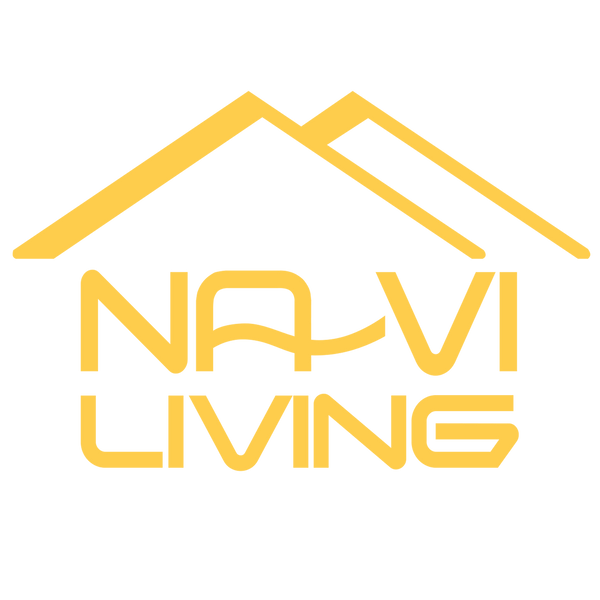A MultiFamily House Plan includes two or more separate living units within one building, offering privacy and efficiency. Ideal for investors, developers, and families, these plans provide flexible housing solutions that maximize space and income potential. This guide covers key designs, cost factors, and financing tips to help you make smart decisions in today’s housing market.
- Multi-Family Homes for Rent: A Guide for Renters & Investors
- Buying a Multi-Family Home: A Guide for Investors & First-Time Buyers
- Multi‑Family Homes for Sale: Complete Guide for Buyers & Investors
Multi-Family House Plans Overview

What Is a Multi-Family House Plan?
A multi-family house plan is an architectural design that includes two or more separate living units within a single building or property. Each unit typically has its own entrance, kitchen, bathroom, and living spaces, allowing multiple families or households to live independently under one roof. This setup differs fundamentally from single-family home plans, which are designed for one household with no shared walls or utilities.
Key features of multi-family house plans include:
- Multiple self-contained units, often ranging from duplexes (two units) to fourplexes (four units) or more.
- Separate utility meters and entrances for each unit, ensuring privacy and autonomy while sharing some common infrastructure like heating or water systems.
- Communal or shared spaces may be included, such as laundry rooms or parking areas.
- Designed to maximize space efficiency and provide affordable housing options.
Differences from single-family plans:
- Single-family homes are free-standing structures designed for one family, with independent utilities and no shared walls.
- Multi-family homes share a building envelope but maintain distinct living units.
- Zoning and legal classifications differ: smaller multi-family homes (up to four units) are usually residential, while larger complexes are often classified as commercial real estate, affecting financing and regulations.
Why multi-family homes are gaining popularity:
- Affordability: Multi-family homes offer more living space at a lower cost per unit compared to single-family homes, making them attractive for families and investors alike.
- Flexibility: They accommodate extended families, rental income opportunities, and multi-generational living.
- Urbanization: Increasing demand for housing in urban and suburban areas drives interest in efficient, scalable multi-family designs.
- Investment potential: Multi-family properties provide steady rental income and diversification for real estate investors.
The Most Popular Multi-Family House Plans
Among multi-family house plans, certain layouts dominate due to their practicality and market demand:
- Duplex: Two units side-by-side or stacked, ideal for small families or investors seeking rental income.
- Triplex and Fourplex: Three or four units in one building, offering more rental units while maintaining manageable scale.
- Townhomes: Multi-story units sharing walls but with individual entrances, combining privacy with density.
Design trends in 2025:
- Open floor plans: Emphasizing spacious, flexible interiors that enhance natural light and social interaction within each unit.
- Modern facades: Clean lines, mixed materials like wood and metal, and large windows define contemporary multi-family homes, appealing to modern buyers and renters.
- Sustainable features: Energy-efficient systems and eco-friendly materials are increasingly incorporated to reduce operating costs and environmental impact.
Pros and cons of common plans:
|
Plan Type |
Pros |
Cons |
|
Duplex |
Cost-effective, easy to manage, good rental income |
Limited units, less scalable for larger developments |
|
Triplex |
Increased rental potential, still manageable size |
More complex management, potential noise between units |
|
Fourplex |
Higher income potential, economies of scale |
Requires more maintenance, zoning restrictions may apply |
|
Townhomes |
Privacy with shared walls, attractive for families |
Higher construction costs, less communal space |
Choosing the right plan depends on goals whether for personal living, rental income, or development scale.
Multi-Family Home Plans for Developers
For developers, selecting multi-family house plans involves balancing market demand, cost efficiency, and regulatory compliance.
How developers evaluate and select layouts:
- Market analysis: Understanding target demographics, rental demand, and local zoning laws.
- Unit mix: Offering a variety of unit sizes (1-3 bedrooms) to attract diverse tenants.
- Cost efficiency: Designs that maximize usable space while minimizing construction and maintenance costs.
- Community amenities: Incorporating shared spaces like green areas or parking to enhance appeal.
Build-to-rent trends:
- Developers increasingly focus on build-to-rent models, constructing multi-family homes specifically for long-term rental rather than sale.
- These projects emphasize tenant amenities, durable materials, and flexible leases, responding to growing demand for rental housing.
- Build-to-rent supports steady income streams and reduces vacancy risks.
Scalable designs for urban vs. suburban areas:
|
Area Type |
Design Focus |
Considerations |
|
Urban |
Higher density, vertical construction, mixed-use |
Maximizing units on limited land, integrating retail or office space |
|
Suburban |
Lower density, horizontal layouts, green spaces |
More parking, family-friendly designs, community feel |
Developers tailor multi-family plans to fit local context, ensuring compliance with zoning and meeting resident expectations. Scalable designs allow adaptation from duplexes in suburbs to mid-rise complexes in cities, optimizing investment returns and resident satisfaction.
Types & Designs of Multi-Family Homes

Multi-Family Homes Design Styles
Multi-family homes today embrace a rich variety of architectural styles, each offering unique visual appeal and functional advantages tailored to diverse preferences and neighborhoods:
- Modern: Rooted in the international style of the 1920s, modern multi-family designs emphasize structured, balanced forms with clean lines, flat or low-pitched roofs, and large windows that flood interiors with natural light. Interiors are often minimalist, featuring warm neutral tones and open layouts that optimize space efficiency.
- Contemporary: More fluid and adaptable than modern, contemporary designs reflect current architectural trends with greater artistic freedom. These homes often showcase unique, freeform shapes, mixed materials, and expansive glazing. Interiors blend modernism and minimalism but with warmer, more inviting atmospheres. Contemporary multi-family homes are known for open floor plans, split bedrooms for privacy, and a seamless connection between indoor and outdoor spaces.
- Traditional: This style incorporates classic architectural elements such as symmetrical facades, pitched roofs, and decorative details like shutters or columns. Traditional multi-family homes exude timeless elegance and familiarity, appealing to those seeking a classic neighborhood aesthetic.
- Colonial: Inspired by early American architecture, colonial multi-family homes feature symmetrical designs, multi-pane windows, and often brick or wood exteriors, conveying a sense of heritage and formality.
- Craftsman: Emphasizing handcrafted details, exposed beams, and natural materials, craftsman-style multi-family homes promote warmth and artisanal quality. Features like covered porches and intricate woodwork enhance curb appeal and foster a welcoming atmosphere.
Façade and curb appeal considerations are vital in multi-family home design to attract tenants and buyers. Effective strategies include:
- Using mixed materials such as stone, wood, and metal to create texture and visual interest.
- Employing balanced color palettes that complement neighborhood character.
- Incorporating landscaping and outdoor lighting to enhance the building’s presence.
- Designing entryways and shared spaces that feel inviting yet maintain privacy.
Energy-efficient and smart home features are increasingly standard in multi-family developments to reduce costs and appeal to environmentally conscious residents:
- High-performance insulation, energy-efficient windows, and HVAC systems.
- Solar panels and renewable energy integration.
- Smart thermostats, lighting controls, and security systems.
- Water-saving fixtures and sustainable building materials.
These features improve long-term affordability and sustainability, enhancing marketability and resident satisfaction.
Family House Floor Plans
Family-oriented multi-family house plans, especially for two-family homes, are designed to maximize functionality on smaller lots while offering flexibility and privacy:
- Ideal layouts for small lots often feature side-by-side or stacked units to optimize limited space without sacrificing comfort. Efficient floor plans minimize wasted space and prioritize open living areas.
- Separate entrances are essential to maintain independence for each family, often positioned on opposite sides or different floors.
- Shared amenities such as laundry facilities, parking, or small outdoor spaces can enhance convenience and reduce construction costs without compromising privacy.
- These homes provide dual income potential and rental flexibility, allowing owners to live in one unit while renting out the other, offsetting mortgage expenses or accommodating extended family members.
- Floor plans typically include 2-3 bedrooms per unit, open kitchens, and adaptable common areas to suit various family sizes and lifestyles.
Multi-Unit Configurations
Multi-family homes come in diverse configurations, each suited to different site conditions, investment goals, and resident needs:
- Duplex: Two units, either side-by-side or stacked vertically, offering a manageable scale for owners and investors. Duplexes balance privacy and affordability.
- Triplex and Fourplex: Three or four units arranged horizontally or vertically, increasing rental income potential while maintaining a community feel.
- Townhouses: Multi-story units sharing walls with neighbors, typically arranged in rows with individual entrances. Townhouses combine privacy with density and often include small private yards or patios.
- Stacked apartments: Multiple units stacked vertically in mid-rise buildings, maximizing density on limited urban land.
Townhouses vs. stacked apartments:
|
Feature |
Townhouses |
Stacked Apartments |
|
Layout |
Multi-story, side-by-side units |
Vertical stacking of units |
|
Entrance |
Individual ground-level entrances |
Shared lobbies or corridors |
|
Outdoor space |
Often private yards or patios |
Limited or shared balconies |
|
Density |
Moderate density |
Higher density |
|
Privacy |
Higher due to separate entrances |
Less, due to shared hallways |
Vertical vs. horizontal design strategies:
|
Strategy |
Description |
Ideal Application |
|
Vertical |
Multi-story buildings with stacked units |
Urban areas with limited land availability |
|
Horizontal |
Side-by-side units spread over larger footprints |
Suburban or rural areas with more space |
Vertical designs maximize land use and accommodate higher densities, essential for urban infill projects. Horizontal layouts provide easier access and more outdoor space, favored in suburban developments.
Building and Cost Considerations

Multi-Family Homes New Construction
Building a multi-family home involves several critical cost components and a structured timeline from concept to occupancy:
- Cost breakdown:
- Land acquisition: Prices vary dramatically based on location, zoning, and lot size. Urban areas typically command higher land costs.
- Permits and fees: Includes zoning approvals, building permits, impact fees, and inspections, which can represent a significant portion of pre-construction expenses.
- Materials: Prices fluctuate due to market conditions, supply chain issues, and tariffs. Common materials include lumber, steel, concrete, and finishes.
- Labor: Skilled labor costs have risen steadily, influenced by demand and regional wage differences. Labor often constitutes 30-40% of total construction costs.
- Timeline from design to move-in:
- Design and planning: 3-6 months, including architectural drawings, engineering, and approvals.
- Permitting: 1-3 months depending on jurisdiction complexity.
- Construction: Typically 12-24 months for mid-size multi-family projects, with potential delays from weather, supply chain, or labor shortages.
- Final inspections and occupancy: 1-2 months to complete inspections, address punch list items, and obtain certificates of occupancy.
- Working with architects and general contractors:
- Architects translate vision into detailed plans, balancing aesthetics, functionality, and code compliance.
- General contractors manage day-to-day construction, subcontractors, scheduling, and procurement.
- Early collaboration between architects, contractors, and developers is essential to control costs, optimize timelines, and ensure quality.
How Much Is a Multifamily Home?
- Average cost per square foot in 2025:
- Multifamily construction costs average around $310 to $350 per square foot nationally, with variations depending on location and building type.
- In major primary markets like Manhattan or San Francisco, costs can exceed $450 per square foot.
- Secondary and tertiary markets see lower costs, ranging from $250 to $350 per square foot.
- Cost variables by location and layout:
- Urban projects face higher land and labor costs but benefit from vertical, high-density designs.
- Suburban and rural developments may have lower land costs but require horizontal layouts, increasing site development expenses.
- Amenities, building height, unit mix, and finishes significantly impact total cost.
- Unusable spaces (lobbies, corridors, stairwells) typically account for about 15% of total square footage but add to construction expenses.
- ROI estimation and rental yield potential:
- Return on investment depends on acquisition cost, construction expenses, rental rates, and occupancy levels.
- Multifamily properties generally offer stable cash flow and lower vacancy risk compared to single-family rentals.
- Developers should conduct detailed market analysis to forecast rental yields and identify break-even points.
- Incorporating energy-efficient features and smart home technology can enhance property value and attract quality tenants.
Financing and Investment Tips
- Mortgage and funding options for investors:
- Conventional loans remain common for smaller multifamily properties (up to 4 units).
- Larger developments often require commercial loans, construction loans, or syndicated financing.
- Private equity, joint ventures, and crowdfunding are growing sources of capital.
- FHA, VA, and conventional loan eligibility:
- FHA loans support multifamily purchases up to 4 units with favorable terms, appealing to owner-occupants.
- VA loans also cover up to 4-unit properties for eligible veterans.
- Conventional loans offer flexibility but typically require higher down payments and stricter credit standards.
- Cost-saving tips and value engineering strategies:
- Early-stage collaboration between design and construction teams to optimize materials and systems.
- Selecting durable, low-maintenance finishes reduces long-term operating costs.
- Modular or prefabricated construction methods can shorten timelines and lower labor expenses.
- Phased construction or build-to-rent models help manage cash flow and market risk.
- Leveraging tax credits and government incentives for affordable housing or energy-efficient buildings.
Who Should Consider a Multi-Family House Plan?
Real Estate Investors
Multi-family house plans are highly attractive to real estate investors seeking long-term rental income and portfolio growth. Investing in multi-family properties offers several advantages:
- Consistent cash flow: With multiple rental units under one roof, investors benefit from diversified income streams. Even if some units are vacant, others continue generating revenue, reducing overall financial risk.
- Tax advantages: Investors can leverage depreciation, mortgage interest deductions, and property tax write-offs to minimize taxable income. Additionally, 1031 exchanges allow deferral of capital gains taxes when reinvesting proceeds into similar properties, facilitating portfolio expansion.
- Scalability and efficiency: Acquiring a single multi-family property with multiple units is faster and more cost-effective than purchasing multiple single-family homes. This consolidation simplifies management and reduces transaction costs.
- Resilience in economic downturns: Multifamily properties tend to be more recession-resistant due to steady rental demand driven by demographic shifts, urbanization, and affordability challenges in homeownership.
These factors make multi-family house plans a smart investment strategy for building wealth and generating passive income in 2025 and beyond.
Private Buyers and Owner-Occupants
Multi-family house plans also appeal to private buyers who want to live in one unit while renting out the others, providing a practical way to offset mortgage costs and build equity. Key benefits include:
- Dual income potential: Owner-occupants can generate rental income from additional units, improving financial stability and affordability.
- Multi-generational living: These homes accommodate extended families by offering separate living spaces under one roof, providing privacy while fostering family cohesion.
- Flexibility: Owners can adapt units over time to meet changing family needs or convert spaces for home offices, guest suites, or rental purposes.
This approach blends homeownership with investment, making multi-family house plans ideal for families seeking both residence and revenue opportunities.
Property Management Firms
For property management companies, multi-family house plans offer operational advantages that streamline tenant management and maintenance:
- Ease of managing grouped units: Managing multiple units within a single property reduces travel time, simplifies maintenance scheduling, and consolidates administrative tasks.
- Tenant placement and turnover: Grouped units allow for coordinated leasing strategies, reducing vacancy periods and improving tenant retention.
- Cost efficiencies: Shared infrastructure and amenities lower per-unit maintenance costs and facilitate centralized services such as security and landscaping.
These efficiencies enable property managers to optimize operations, improve tenant satisfaction, and enhance profitability, making multi-family homes a preferred asset class for professional management firms.
FAQs About Multi-Family House Plans

Q1: Can I customize a multi-family house plan?
Absolutely. Multi-family house plans are fully customizable to meet a wide range of needs, whether you’re an investor, a family looking for multi-generational living, or a developer targeting rental markets. Customization can include altering the number of bedrooms and bathrooms per unit, adjusting unit sizes, reconfiguring common areas, and modifying exterior designs to fit neighborhood aesthetics or personal taste. Architects and designers can also incorporate accessibility features, energy-efficient technologies, and smart home systems tailored to your preferences. This flexibility ensures that the final design aligns with your financial goals, lifestyle requirements, and regulatory constraints, offering a unique balance between functionality and curb appeal.
Q2: How much land do I need?
The land requirement for a multi-family home varies significantly based on the number of units, building type, and local zoning regulations. For smaller projects like duplexes or triplexes, especially in urban areas such as Toronto, Chicago, or New York City, compact lots can suffice due to vertical stacking or side-by-side configurations. These designs maximize space efficiency, often fitting comfortably on lots as small as 5,000 to 7,000 square feet. Larger multi-family projects, such as fourplexes, townhomes, or low-rise apartment buildings, require more extensive land parcels to accommodate parking, outdoor amenities, and setbacks mandated by zoning laws. In suburban or less dense areas like Calgary or Houston, horizontal layouts on larger lots are common, offering more outdoor space and privacy. It’s crucial to review local zoning codes early to understand minimum lot size requirements, building coverage limits, and setback rules, which directly influence how many units you can build and how the property will be arranged.
Q3: Do I need zoning approval?
Yes, obtaining zoning approval is a fundamental step when planning a multi-family home. Zoning ordinances determine what types of housing are permitted on a given parcel of land, including restrictions on density (number of units), building height, lot coverage, parking, and use. Most residential zones allow single-family homes by right, but multi-family developments often require specific zoning designations or special permits. If your property is not already zoned for multi-family use, you may need to apply for a rezoning, variance, or conditional use permit, which can involve public hearings and compliance with additional regulations. These processes vary by municipality and can impact your project timeline and costs. Engaging with local planning departments early and consulting professionals familiar with local codes—especially in cities with complex regulations like New York or Los Angeles—can help streamline approvals and avoid costly delays.
Q4: What is the best layout for rental income?
The optimal layout for maximizing rental income balances tenant privacy, unit functionality, and efficient use of space. Proven configurations include:
- Separate entrances: Side-by-side or vertically stacked units with independent access reduce tenant overlap and improve privacy, which is highly valued by renters.
- Open floor plans: Spacious, open-concept living, dining, and kitchen areas enhance the appeal of each unit, making them feel larger and more modern.
- Multiple bedrooms and bathrooms: Offering 2-3 bedroom units with at least one full bathroom per bedroom increases marketability to families and roommates, expanding your potential tenant pool.
- Flexible spaces: Bonus rooms or adaptable areas that can serve as home offices, gyms, or guest rooms cater to evolving tenant needs, especially post-pandemic.
- Soundproofing: Effective insulation between units minimizes noise complaints, increasing tenant satisfaction and retention.
- Shared amenities: Laundry facilities, parking, and outdoor spaces add value without significantly increasing individual unit costs.
Additionally, layouts that incorporate energy-efficient appliances and smart home features can justify higher rents by lowering utility costs and attracting quality tenants. In competitive markets like Chicago or Dallas, properties with well-designed units and thoughtful amenities tend to achieve higher occupancy rates and stronger rental yields over time.
Conclusion:
MultiFamily House Plans offer a smart blend of affordability, flexibility, and strong investment potential. By choosing the right design and financing options, investors and homeowners can maximize rental income and meet diverse living needs. This guide provides the essential insights to succeed in the growing multi-family housing market of 2025.




